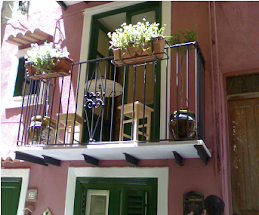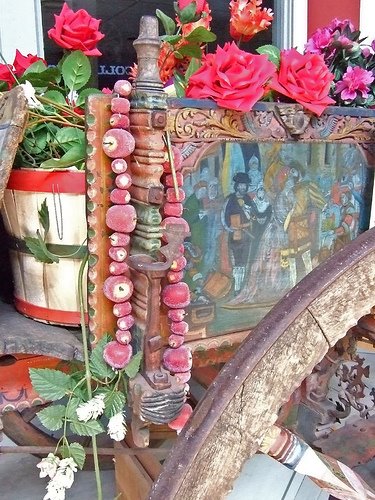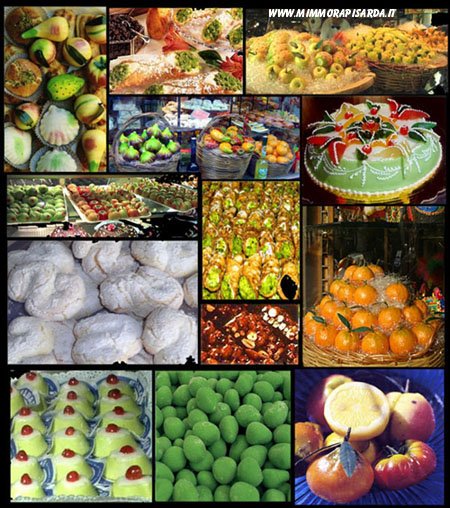
The French may talk the most about sex and baking, but the Sicilians have the best renditions....
The bread called "coppiette" is made to resemble a couple involved in, shall we say, carnal knowledge. This is an apparent reference (we believe) to the ancient custom of a couple having sex in the wheat field in order to ensure its fertility.
There's a particular shaped pastry called "prucitanu", that seems to resemble a woman's genitals, which is often given by the wife to her husband at Christmas (the pastry that is). Conversely, she might give him the cream-filled phallus/biscuit called "viscotta di san martinu", named after the patron saint of the cuckolded husband.
The best tale relates to the "xuccarati", a hard circular pastry with a hole in the middle that well endowed grooms use to calm fearful brides. You put seven on your, ahem...penis and remove one for each night you're together. Other hot dishes draw inspirations from erogenous body part including the pistacchio-flavoured pastries, called "fedde" - they linguisitcally refer to, and physically resemble, buttocks!
The most common of these erotic mouthfuls is the "minni di virgini", or Virgin's breasts, a custard filled pastry shaped like a woman's breast and topped with an aroused cherry nipple. Also sold-sans niple-as genovesi. The story behind this delicious pastry, however is less than appetizing.: the pastry commemorated the martrydom of St. Agatha, who had her breasts cut off by Roman pagans for refusing to renounce Christ. This story, however, is thought to be simply a Christianiztion of of an ancient Egyptian rite in which priests carried about a golden breast-supposedly of Osiris-and poured milk libations for the devout.
The most common of these erotic mouthfuls is the "minni di virgini", or Virgin's breasts, a custard filled pastry shaped like a woman's breast and topped with an aroused cherry nipple. Also sold-sans niple-as genovesi. The story behind this delicious pastry, however is less than appetizing.: the pastry commemorated the martrydom of St. Agatha, who had her breasts cut off by Roman pagans for refusing to renounce Christ. This story, however, is thought to be simply a Christianiztion of of an ancient Egyptian rite in which priests carried about a golden breast-supposedly of Osiris-and poured milk libations for the devout.
Whether it is a phallus-shaped bisquit, sweet buttocks or a couple of breasts, we do not ask questions but simply enjoy the taste!
The following is based on the recipe created by the Monastery of the Virgins of Palermo, as described by writer June di Schino in her article, "The Waning of Sexually Allusive Monastic Confectionery in Southern Italy" in the book, "Disappearing Foods". Makes eight. Best enjoyed warm.
Minni di Virgini (Virgin's breasts)
Three cups of basic pastry dough.
½ cup Basic Pastry cream,
Candied pumpkin (succatta) or filling of your choice
Powdered Sugar and candied cherries cut in half.
Preheat oven to 425F (220C). Divide the dough into seven pieces and roll them into rectangles about 6x 4 x 1/4. Place two tablespoons of the filling made up of pastry cream on one half of the rectangle and sprinkled with chopped candied pumpkin and/or chocolate. Fold the other half over it. Seal it well and then cut out a circular shape about three inches round with a glass of pastry cutter. Put the halved candied cherry in the middle and bake for 6-8 minutes or until lightly browned. Sprinkle with confectioner's sugar and serve.











